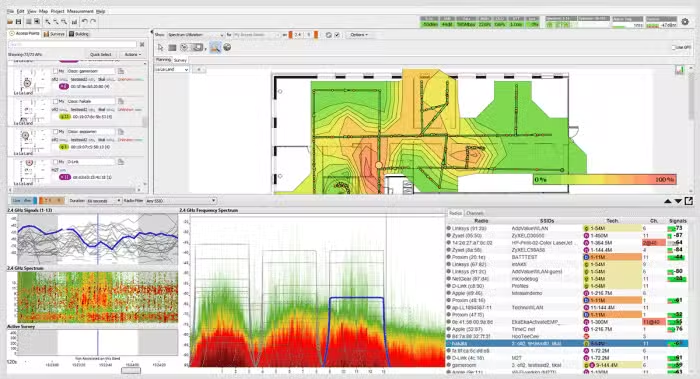What is WIFI 6E?
Wi-Fi 6E expands the previous Wi-Fi 6 (802.11ax) standard and enables access to the new 6 GHz band. Wi-Fi 6E takes the efficient features of Wi-Fi 6 such as OFDMA, WPA3 and Target Wake Time and transfers them to the 6GHz band to provide more contiguous spectrum and less interference. With Wi-Fi 6E, enterprises can address new use cases that require multi-gigabit speeds such as high-definition video.
How does Wi-Fi 6E work?
Today, WLAN uses two frequency bands: 2.4 GHz and 5 GHz. Wi-Fi 6E uses a third frequency band: 6 GHz. Wi-Fi 6E extends the capabilities of Wi-Fi 6 to 6 GHz for greater efficiency, higher throughput and greater security.
Why Wi-Fi 6E?
- More capacity in the 6 GHz frequency band eliminates connection and congestion problems.
- Wider channels of up to 160 MHz are ideal for HD video and VR.
- No interference from microwaves etc. as only 6E-capable devices can use the frequency band.
What device classes does Wi-Fi 6E support?
- Standard Power AP (SP-AP): Supports indoor and outdoor operations where SP-APs are coordinated via AFC (Automated Frequency Coordination Service) to avoid interference of 6GHz Wi-Fi with established services, e.g. B. public safety facilities and cellular backhaul, microwave connections, satellite services and TV broadcast services.
- Low Power Indoor AP (LPI-AP): This fixed, indoor-only class uses lower power levels and does not require AFC. LPI APs for indoor enterprise use provide the same coverage as today's Wi-Fi 6 APs and will provide similar 6 GHz coverage to today's 5 GHz radios.
- Very Low Power AP (VLP-AP): VLP APs enable indoor and outdoor mobile use via mobile clients for use cases such as small cell coverage, hotspots, etc.
Our planning and lighting already takes Wi-Fi 6E/6 GHz into account
Of course, we can only carry out reliable and valid WLAN planning on the basis of precise building or construction plans, graphics or our own measurements in the respective buildings or floor areas. Before we can begin the individual planning of your WLAN infrastructure, such plans with the actual length and height information are fundamental, as these are an integral part of the high accuracy of the measurement. Showing the desired WiFi areas on the plans and the exact expectations is also part of the information we need in advance of WiFi coverage.
Understanding your goals together.
We will also discuss with you:
What is your WiFi network used for?
What WiFi capacity is required?
Are there any requirements regarding company-wide (IT) compliance or other legal requirements?
Is it a manageable number of emails or a few documents, or does it involve controlling several hundred printers and scanners?
Or are we already moving into the area of voice over IP or campus-like requirements with thousands of devices?
We will also discuss with you how many users or devices are to be expected.



